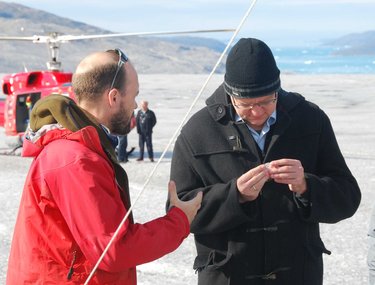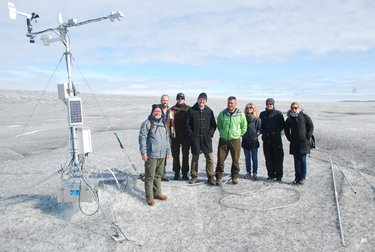A dark future
Andreas P. Ahlstrøm, Senior Scientist, GEUS & Jason E. Box, Professor, GEUS
The Greenland Ice Sheet is facing a darker future. The snow on the surface of the Greenland ice sheet has become more than 5% darker over the last decade – and a darker surface brings more trapped sunlight that in turn increases melting. When fresh snow warms up snow crystals become rounded and absorb more energy from the Sun. Until recently, this has been the only explanation for the gradual darkening of the surface, but now a new study show that windblown dust has played an increasingly important role since 2009. The reason is believed to be the shortening of the snow cover season in the Northern Hemisphere, causing dust to be blown onto the ice sheet surface earlier in the spring.
References:
Dumont, M., E. Brun, G. Picard, M. Michou, Q. Libois, J-R. Petit, M. Geyer, S. Morin & B. Josse. 2014. Contribution of light-absorbing impurities in snow to Greenland's darkening since 2009, Nature Geoscience 7, 509–512, doi 10.1038/ngeo2180
Box, J.E., J. Cappelen, C. Chen, D. Decker, X. Fettweis, T. Mote, M. Tedesco, R.S.W. van de Wal, J. Wahr. 2013. Greenland Ice Sheet in Arctic Report Card 2012.







